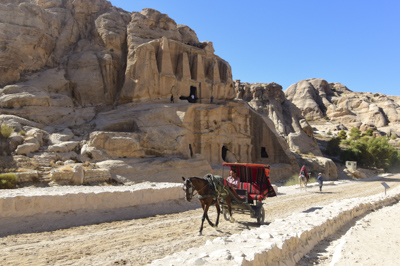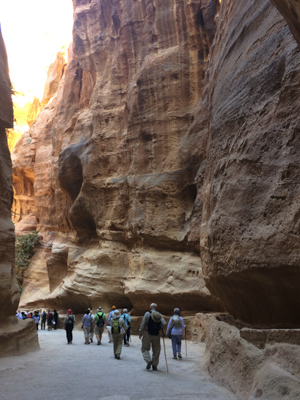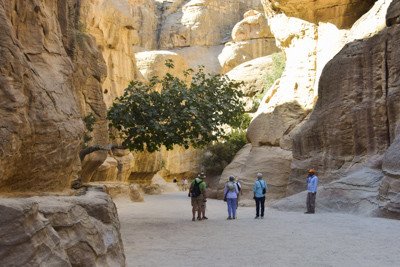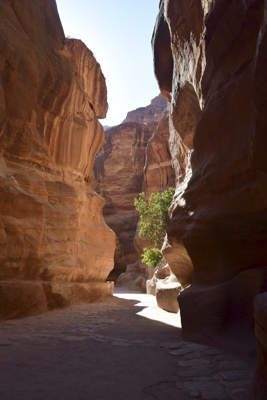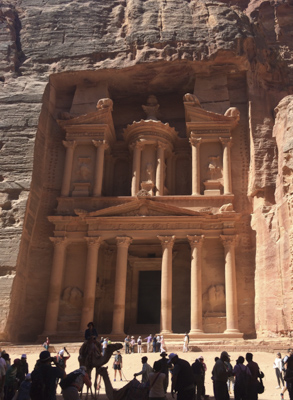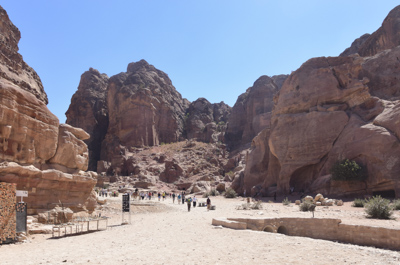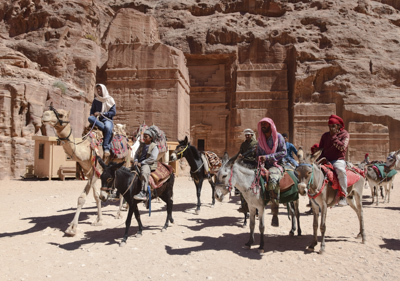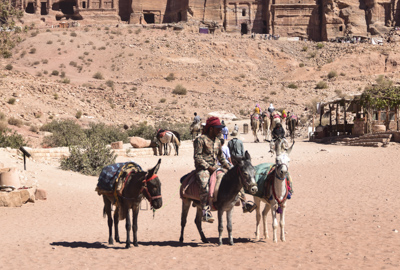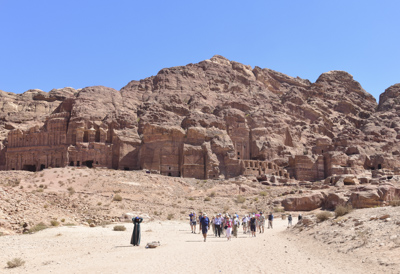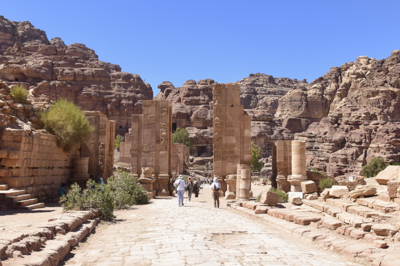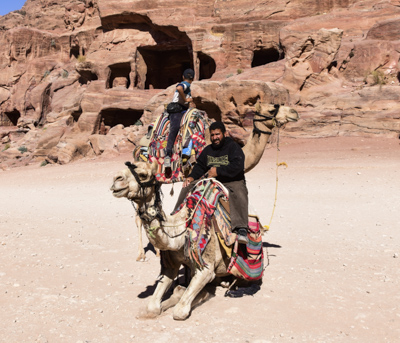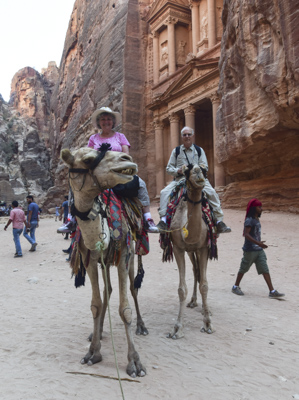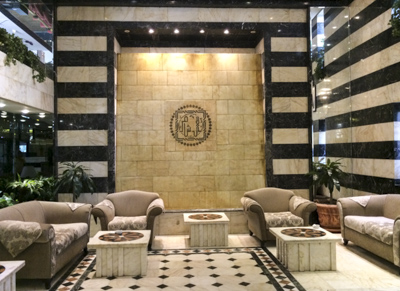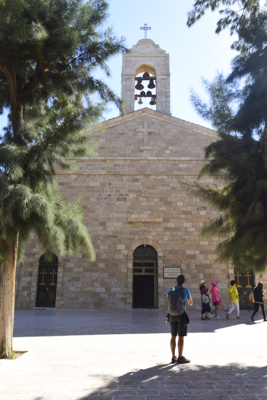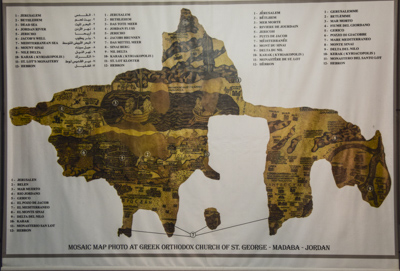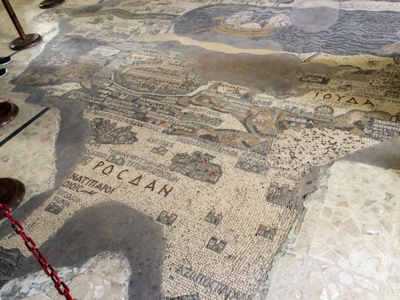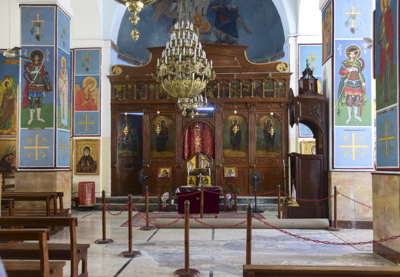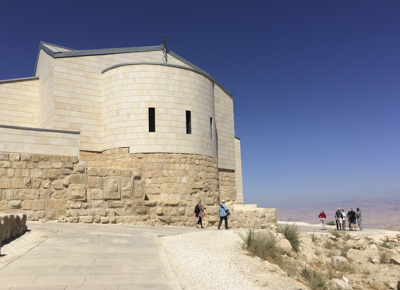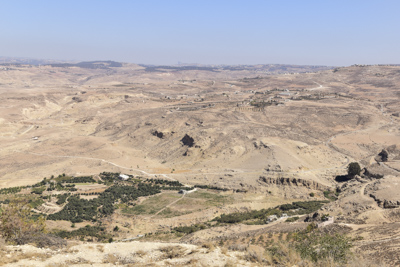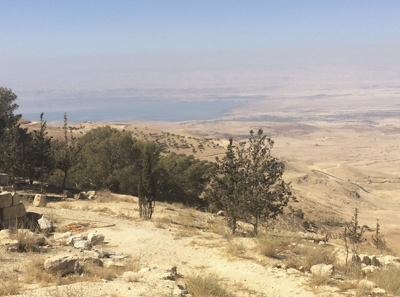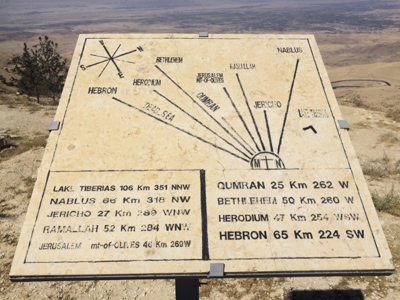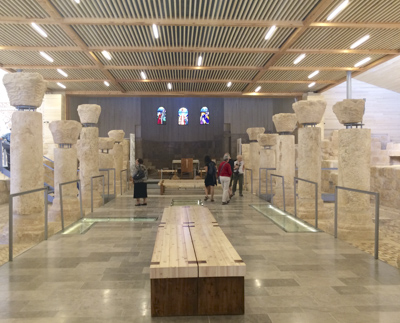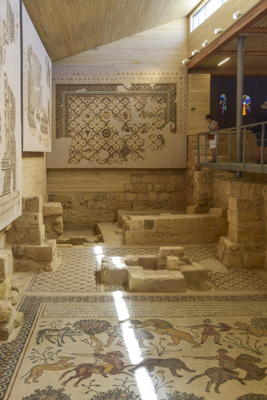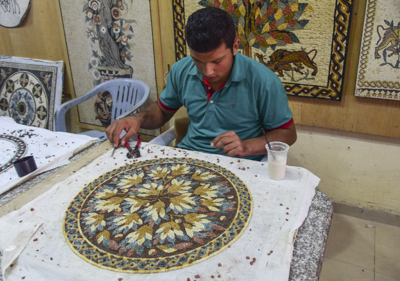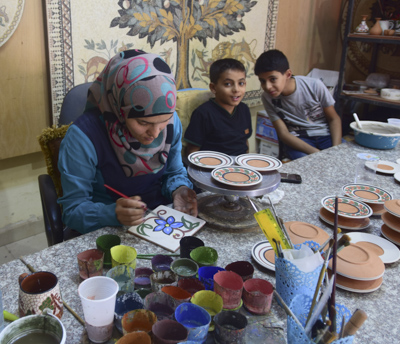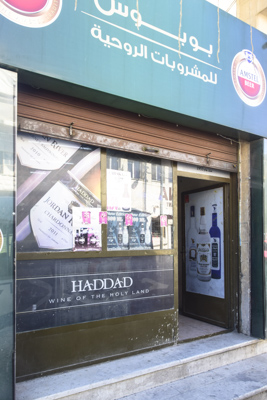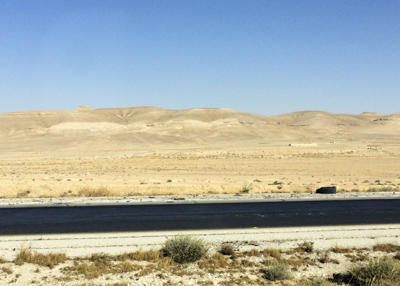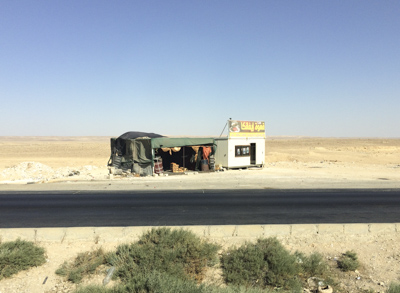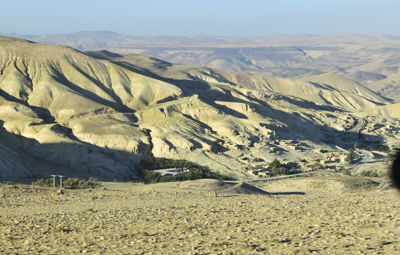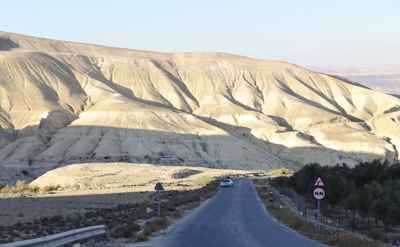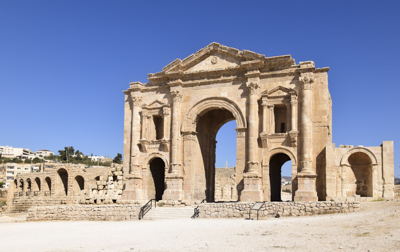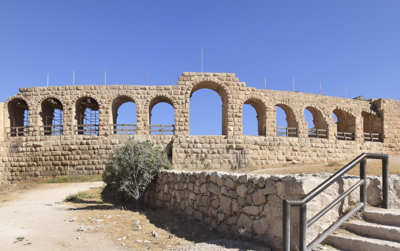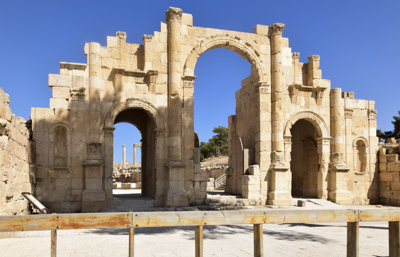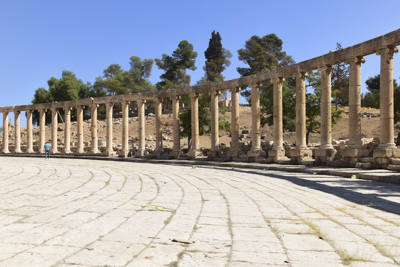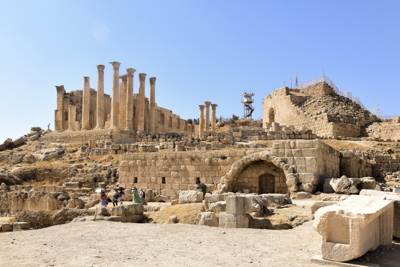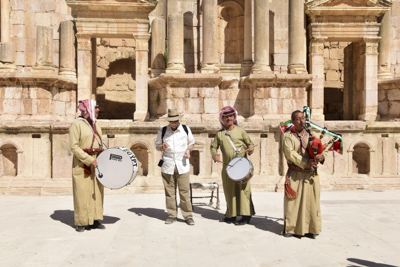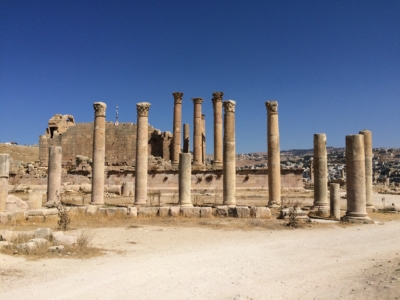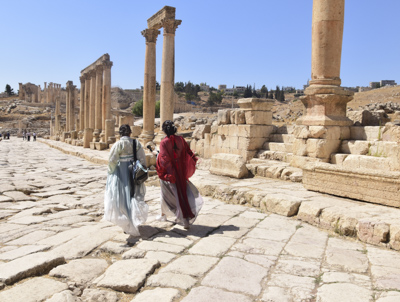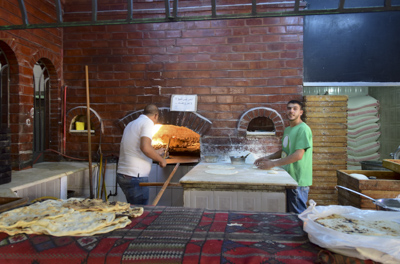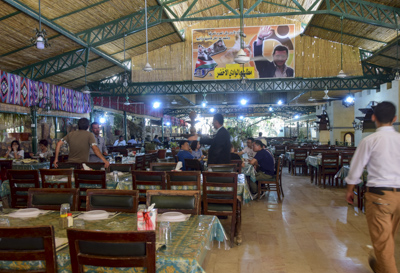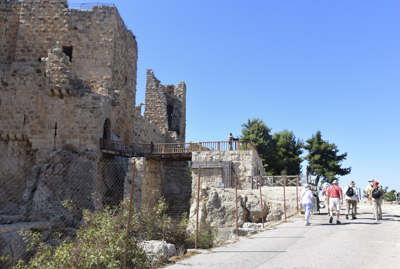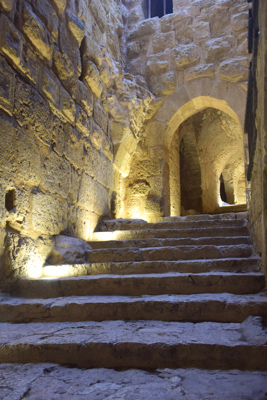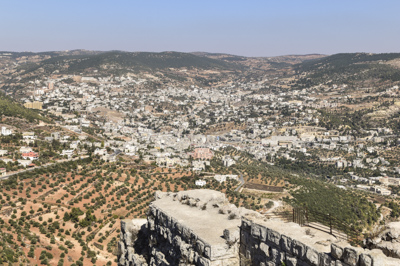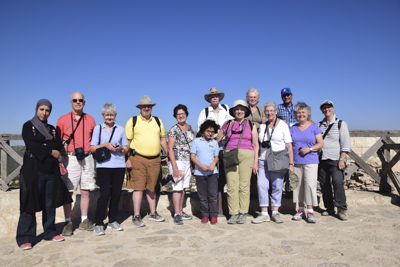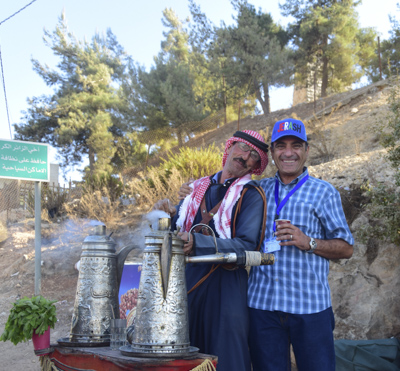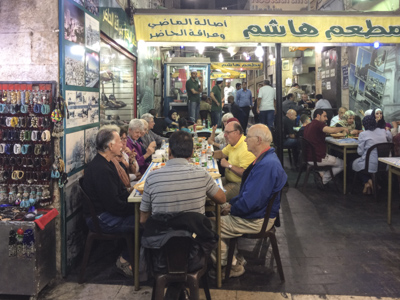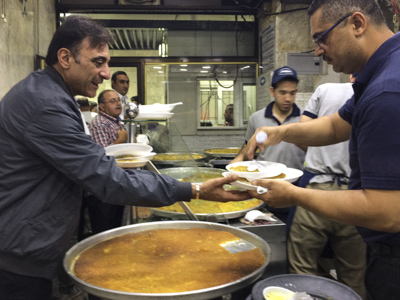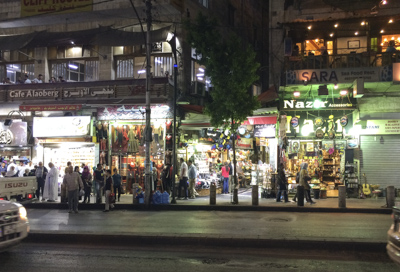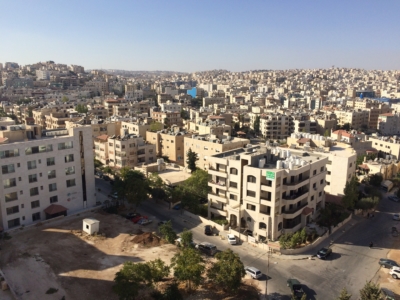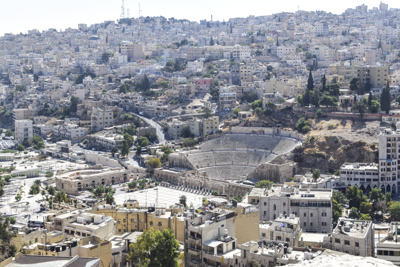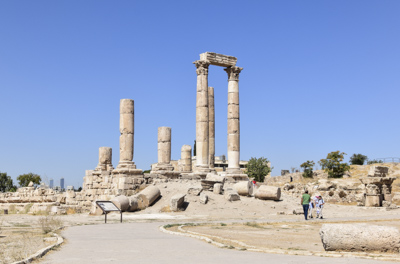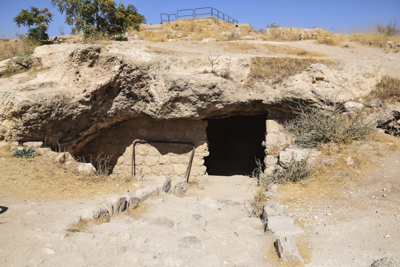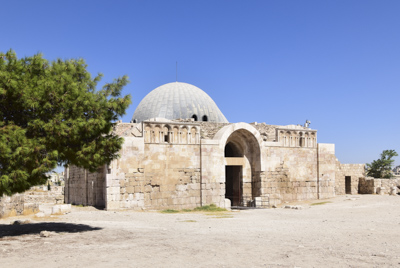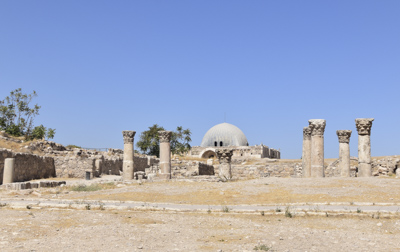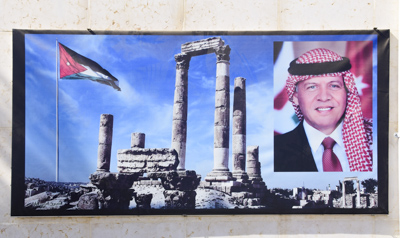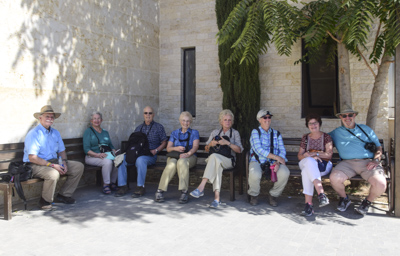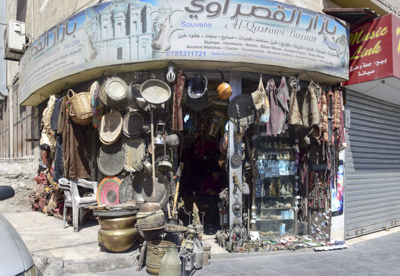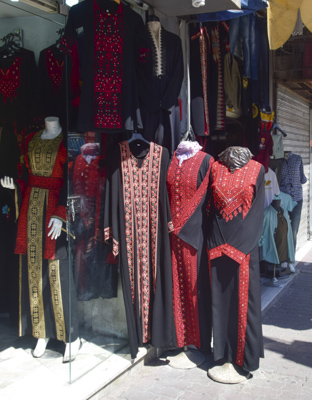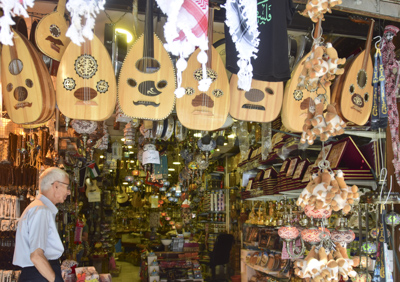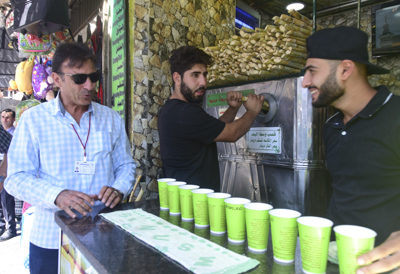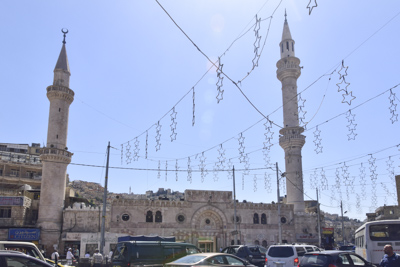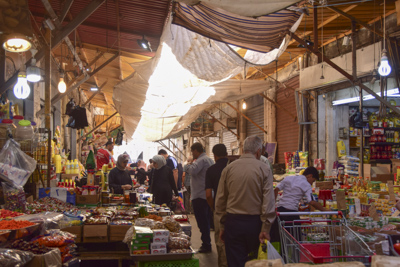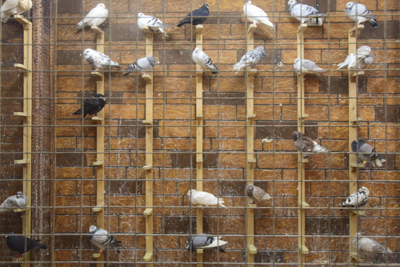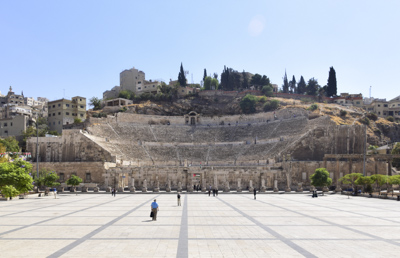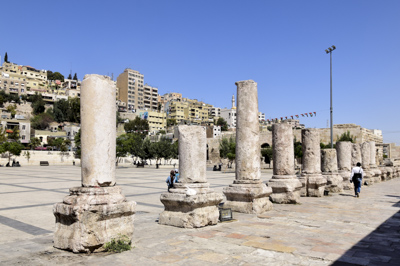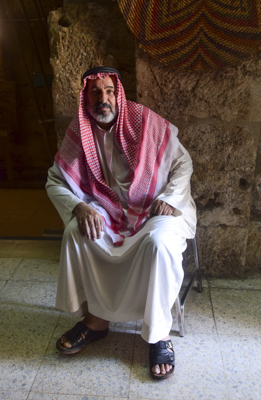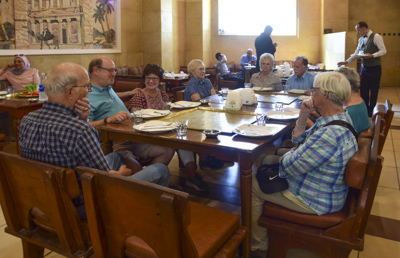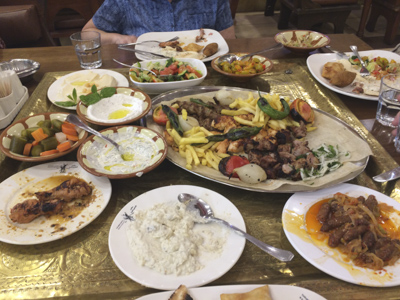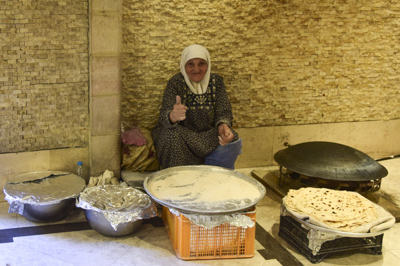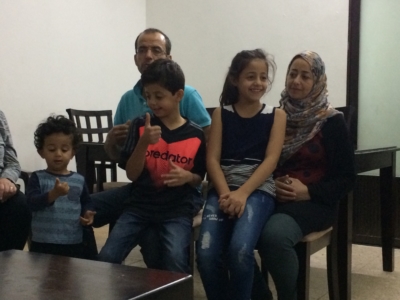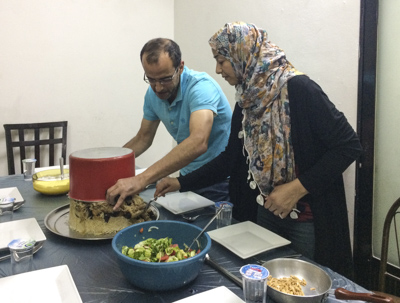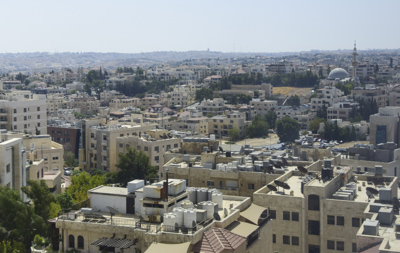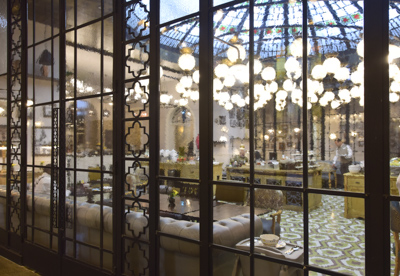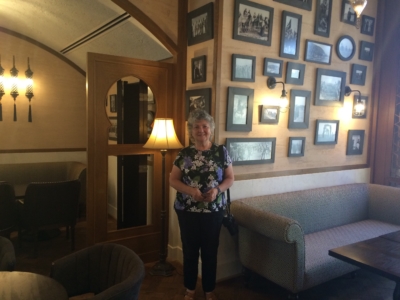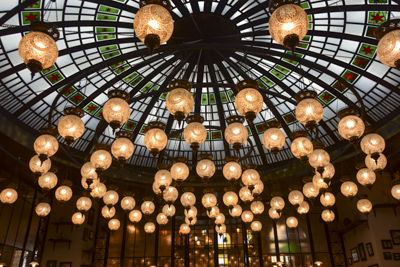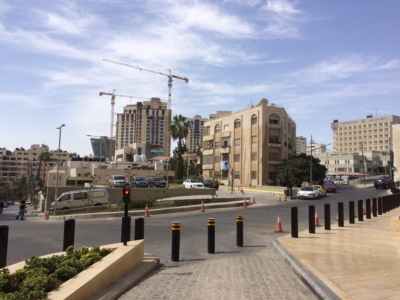Saturday – September 30, 2107
The Petra Moon Hotel was a short walk to the famous archaeological site. We ate an early breakfast and walked down the hill to the Visitors’ Center.
The well worn path led to an area where local Bedouins had horses available for people to ride instead of walking to the Siq. Al Siq is the narrow gorge that leads to the entrance to the city of Petra and is about a mile long.
Originally known as Raqmu, Petra is perhaps the most spectacular ancient city remaining in the modern world today. The “Red City” is a UNESCO Heritage Site and one of the New Seven Wonders of the World. As we entered the Siq, the path narrowed to about 15 feet across. The walls towered 650 feet above us.
Sometime during the sixth century BC, nomadic Nabataeans settled and made Petra their capital. The Nabatean Kingdom preserved its independence for centuries. They created an amazing system of hydraulic engineering in the desert. Channels were carved out of the rock and earthenware pipes, dams, and cisterns were constructed to collect water and to irrigate farmland.
After we followed the winding path for about a mile, the narrow Siq opened to reveal the most impressive monument in Petra: al-Khazneh, (Arabic for “the Treasury”). It was carved out of solid rock from the side of a mountain and stands over 150 feet high. Although it served as a royal tomb, the Treasury gets its name from a legend that pirates hid their treasure there.
After walking more than two miles to reach The Treasury, we rested and watched the flurry of activity in front of the incredible stone carving. It was a noisy chaotic mixture of tourists, camels, donkeys, horses, and local Bedouin boys selling postcards and jewelry.
We passed through another short steep gorge to reach the wide heart of the city between towering cliffs. The steep rock faces were carved out for tombs, markets, temples, baths, and cave dwellings.
It was a long walk along the main canyon between Petra’s cliffs. We were entertained by the camel drivers and their relatives selling donkey and horse rides. The enterprising young Bedouin in the photo below told me his three donkeys were named Ferrari, Lamborghini, and Maserati.
Tourists passing the Royal tombs:
We walked along a narrow thoroughfare called The Colonnade which was built curing Roman times, about 100 AD. Historians believe it was used for ceremonial purposes. The ruins of the triple-arch Temenos Gate are at the western end of the Colonnade.
Our reward at the end of a long walk was lunch at the Crowne Plaza restaurant which is the end for point for most tourists. Some tourists like to continue on the path and climb 850 steps up to the Monastery, but I did not. After lunch, I began to walk back to the Visitors’ Center but was easily persuaded to take a camel ride back to the Treasury.
The kind owner with his two camels. He said they were gentle animals with good memories.
My camel’s name was Zoo Zoo, and it was sooooo much fun to ride!!!!! The highlight of my trip!!
We walked back through the beautiful Al Siq gorge and the long path to the Visitors’ Center and back to the hotel. Visiting spectacular Petra was one of the most exciting, breathtaking, and amazing experiences of my life. Riding Zoo Zoo was a thrilling and fun experience. I will never forget Petra.
